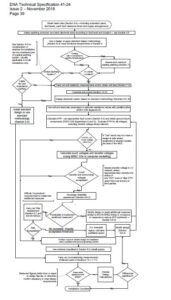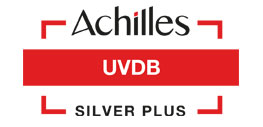The New ENA earthing standards have finally arrived after a very lengthy consultation process. The two new documents issued are ENA 41-24 and ENA S34.
For those of you not too familiar with this standard, it is used to calculate the earth grid impedance, earth potential rise and associated touch and step voltages, during a phase-earth fault on an HV electrical network. The update is long overdue, and whilst the older standards were very good, they were rather dated in some areas.
There are some fairly major changes in the new ENA standards, the most important of which is alignment with the BS EN 50522 standard. This results in a much more streamlined and practical standard, with some helpful new criteria and assessment procedures.
At a practical level, what does this mean for earthing designers, operators and ICPs?
There are a few key major differences:
- Lots of updated pictures, and scenarios.
- There is a very useful practical flow chart for deciding on the design route that must be followed (see below).
- Global earthing is now an accepted approach – this will be very useful for smaller substations in urban environments, and may avoid the need for detailed CDEGS modelling if certain criteria are met.
- The criteria for separating HV and LV earthing systems has now been updated, and is no longer based on a simple EPR >430V or 1ohm rule. Practically the new criteria are very similar to the old guidelines though!
- The concept of ‘stress voltage’ of 2kV is now included, this concept relates to an HV earth fault with a high EPR causing a stress on the LV insulation and potentially a failure. HTis will potentially limit the EPR of an HV/LV system to 2kV.
- The safe touch and step voltages have been updated and revised for a variety of different protection clearing times.
- The step voltage limits are now much higher, and tolerable step limits are much less likely to be a be problem unless it is a sensitive site.
- More practical guidance is given in terms of separation between HV earthing systems and other buried services and buildings.
- It is now generally regarded that use of earthing software is necessary for all but the most simple of cases.
- ENA S34 now includes a major update to the nomographs at the back of the standard to some standard modern XLPE cable types for both flat and trefoil formations.
One interesting point to note, on scaling factors, is that the old version of S34 was based on PILC and PICAS cables, and these are no longer shown in the new S34 standard. So there may need to be some back referencing when older style PILC/PICAS cables are encountered. Although on more complex sites, Aurora would recommend using the TRALIN/SPLITS modules in CDEGS to calculate them directly. Whilst the latter approach is always best for larger projects, it is often not viable for smaller 11kV sites.
We will add some further detail about the standards when we have chance, so please check back soon!




